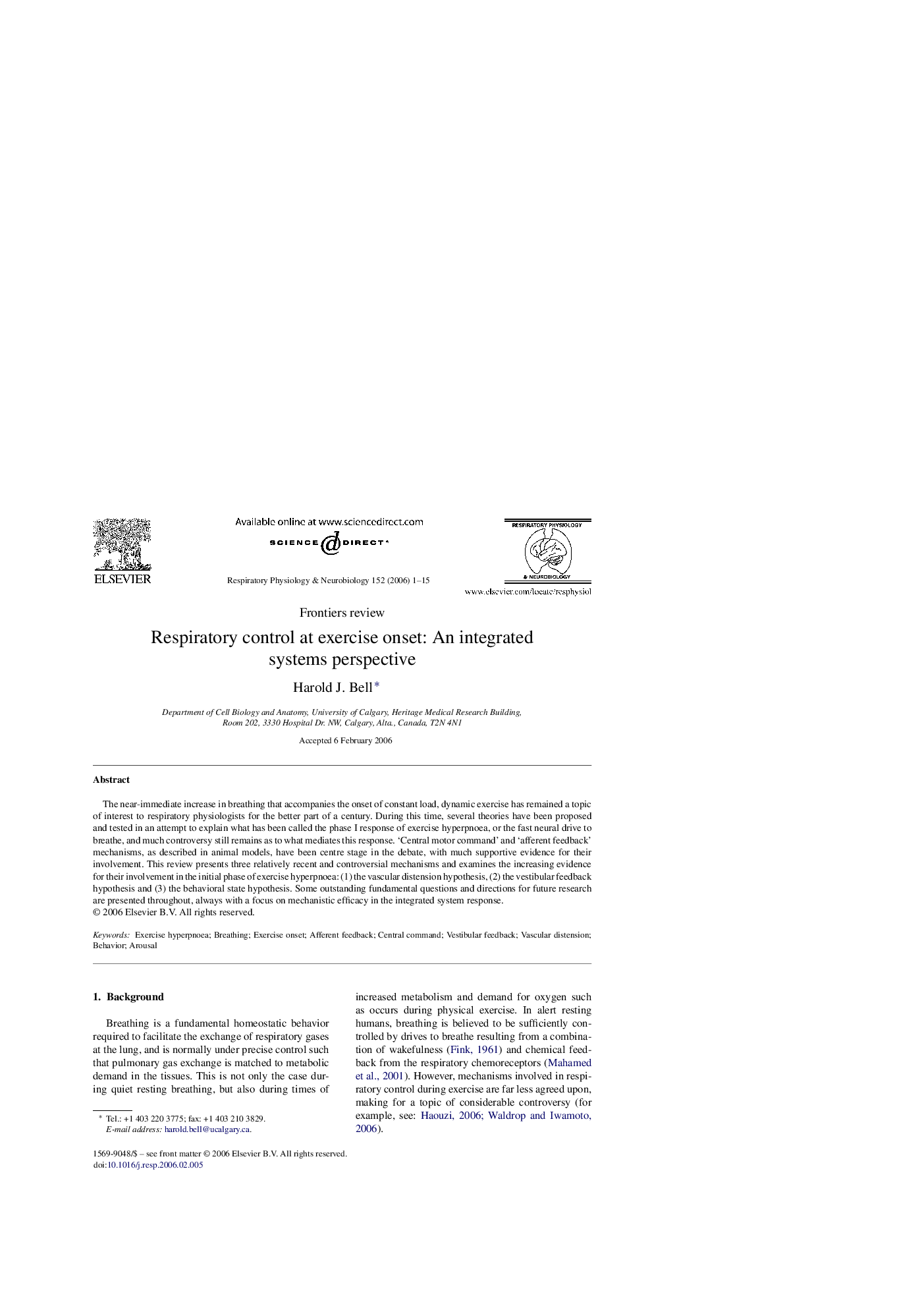| Article ID | Journal | Published Year | Pages | File Type |
|---|---|---|---|---|
| 2848662 | Respiratory Physiology & Neurobiology | 2006 | 15 Pages |
The near-immediate increase in breathing that accompanies the onset of constant load, dynamic exercise has remained a topic of interest to respiratory physiologists for the better part of a century. During this time, several theories have been proposed and tested in an attempt to explain what has been called the phase I response of exercise hyperpnoea, or the fast neural drive to breathe, and much controversy still remains as to what mediates this response. ‘Central motor command’ and ‘afferent feedback’ mechanisms, as described in animal models, have been centre stage in the debate, with much supportive evidence for their involvement. This review presents three relatively recent and controversial mechanisms and examines the increasing evidence for their involvement in the initial phase of exercise hyperpnoea: (1) the vascular distension hypothesis, (2) the vestibular feedback hypothesis and (3) the behavioral state hypothesis. Some outstanding fundamental questions and directions for future research are presented throughout, always with a focus on mechanistic efficacy in the integrated system response.
